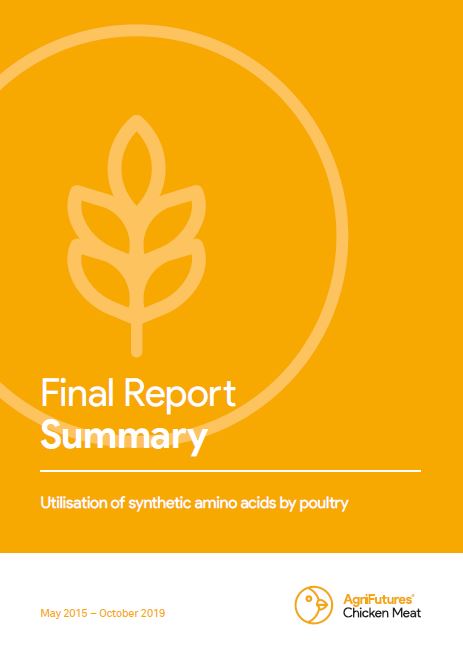For chicken meat production, there is considerable interest in the successful development of reduced crude protein (CP) diets that contain high inclusion levels of non-bound amino acids. In fact, modest reductions in CP are being realised by inclusions of non-bound (crystalline or synthetic) methionine, lysine and threonine in meat chicken diets that have been routinely practised for decades. As inclusion costs of non-bound amino acids decline with economies of scale from increased production, the economic advantages of lower feed ingredient costs will emerge. Reduced-CP diets have the potential to provide real advantages, including less environmental pollution due to decreased outputs of nitrogen and ammonia; increased bird welfare from better quality litter; and lower incidences of footpad dermatitis and enhanced flock health from less undigested protein entering the large intestine to fuel the proliferation of potential pathogens such as Clostridium perfringens, the causative organism of necrotic enteritis.
Reduced-CP diets contain more feed grains (wheat and/or sorghum), less protein meals (soybean meal and/or canola meal), but more non-bound amino acids so that amino acid requirements are met despite the reductions in dietary CP. Moderate reductions in dietary CP levels can be achieved without compromised meat chicken performance when coupled with careful inclusions of non-bound amino acids. Nevertheless, there appears to be a threshold where CP reductions negatively influence growth performance, especially feed-conversion ratio (FCR), which is associated with increased fat deposition. If reduced-CP diets are to be developed successfully, there is a need to improve understanding of the utilisation of non-bound amino acids in chicken meat production.
This project explored three aspects of the utilisation of non-bound amino acids by meat chickens. These comprised investigations into the impacts of: (i) daily feed access intervals (Yin et al., 2019a); (ii) whole grain feeding (Yin et al., 2019b); and (iii) dietary starch:protein ratios (Greenhalgh et al., 2020).





